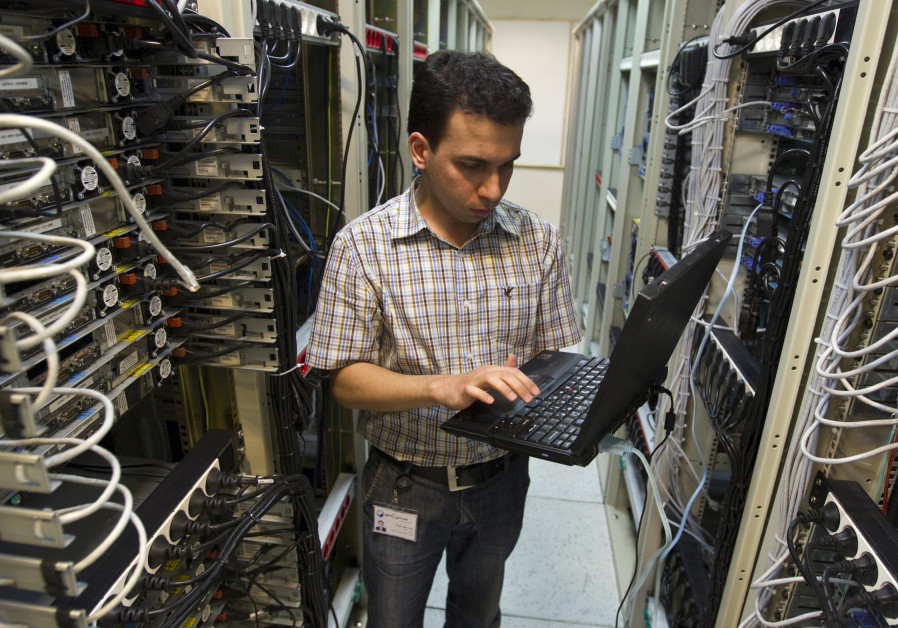The intranet is intended to promote Islamic content and raise digital awareness among the public.
By TZVI JOFFRE
May 21, 2019 23:40
2 minute read.
A computer engineer checks equipment at an internet service provider in Tehran February 15, 2011. (photo credit: CAREN FIROUZ / REUTERS)
Iran’s national information network (ININ), a intranet system that the country is working on, is 80% complete, the Supreme Council of the Cultural Revolution announced on Sunday to mark world telecommunications day, according to Radio Farda, a U.S. funded Persian language radio station.
The Islamic Republic is hoping to cut the country’s dependency on international cyberspace with the ININ, according to the report.
Saied Reza Ameli, a professor of communications at Tehran university and a mid-ranking cleric, said that nearly $285 million has been allocated so far by the government and another $166 million has been allocated by the private sector to create the ININ, Radio Farda reported.
The plan was first announced in 2010 with an expected completion date in 2015.
The first of three stages of the project was finished in August 2016, according to the BBC.
“All domestic activities, services, applications [and] various types of contents… are included in the national internet,” said Communications and Information Technology Minister Mahmoud Vaezi at the inauguration event in 2016, according to the BBC.
The intranet is intended to promote Islamic content and raise digital awareness among the public, according to the BBC.
IRNA, a state news agency, said that the intranet would offer “high quality, high speed” connections at “low costs,” according to Radio Farda.
Iran already has blocked access to tens of thousands of sites and services including Twitter and Facebook, although many users use virtual private networks (VPNs) and proxy sites to bypass the filter.
In February, Iran’s prosecutor-general Mohammad Ja’far Montazeri warned that “blasphemy, anti-national security teachings, and the destruction of the identity of the youth are among the issues we face in cyberspace,” Radio Farda reported.
At the event on Sunday, according to the same report, the current minister of information and communication technology, Mohammad Javad Azari Jahromi, stated that 142 successful tests were conducted to “weigh the independence of Iran’s national intranet network against a possible internet disconnection.”
Azari Jahromi also stated that he believes that Iran is capable of confronting cyberspace threats.
Last February, Iran announced that they were going to conduct an “internet disconnection drill,” according to the radio station, but the plan has been delayed.
Iran also has its own firewall to counter cyberattacks, according to Azari Jahromi.
“The indigenous firewall is currently installed on all industrial control systems operating under the Siemens brand,” Jahromi explained.
The national firewall, known as Dezhfa, was designed and developed by young Iranian scientists and successfully tested on industrial automation systems, according to an Instagram post by Jahromi.
Jahromi also claimed that 33 million cyberattacks were neutralized by Iran this year, in comparison to 600,000 cyberattacks last year, Radio Farda reported.
“The National Internet Project could pave the way for further isolation, surveillance and information retention,” stated a report by the British human rights campaign group Article 19, according to the BBC. “[It] risks severely isolating the Iranian people from the rest of the online world, limiting access to information and constraining attempts at collective action and public protest.”
Content retrieved from: https://www.jpost.com/Middle-East/Irans-isolated-national-intranet-system-is-80-percent-complete-report-590319.
